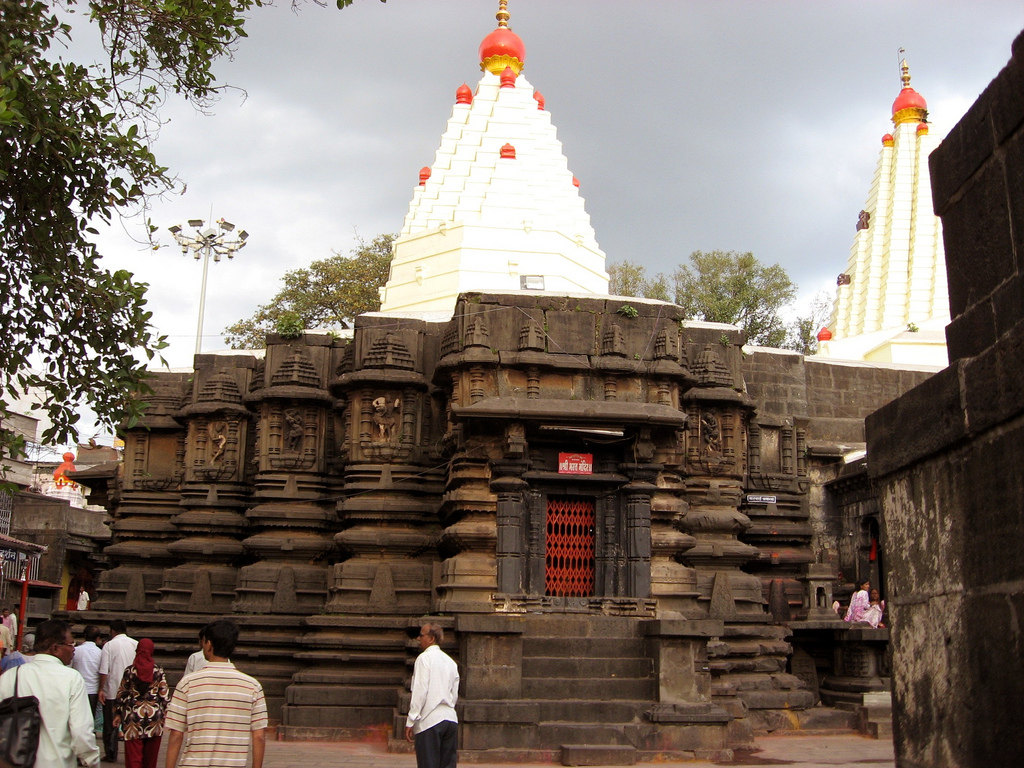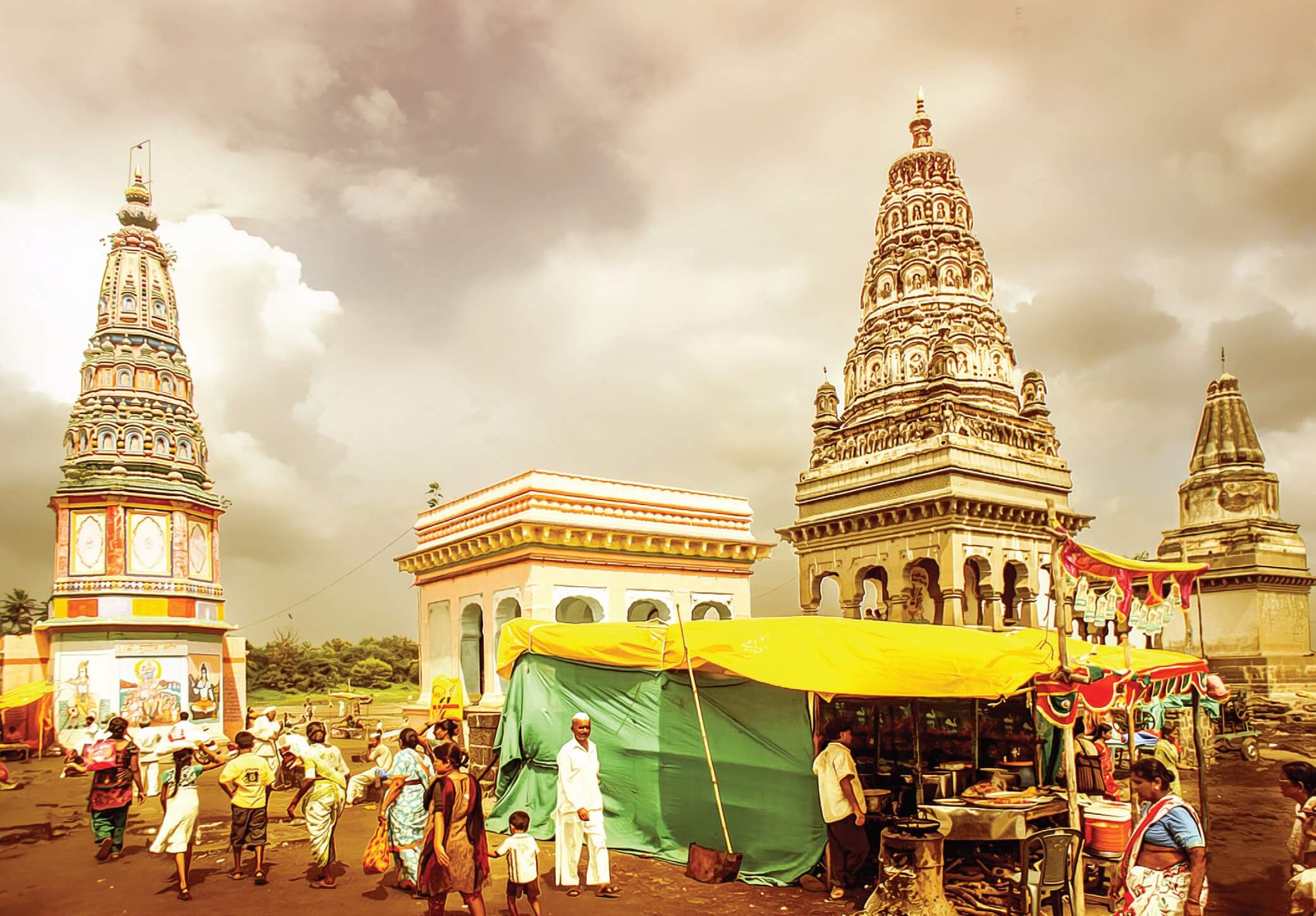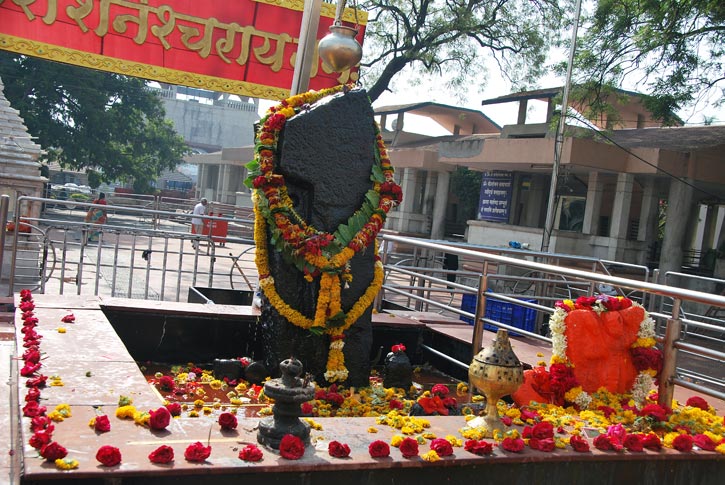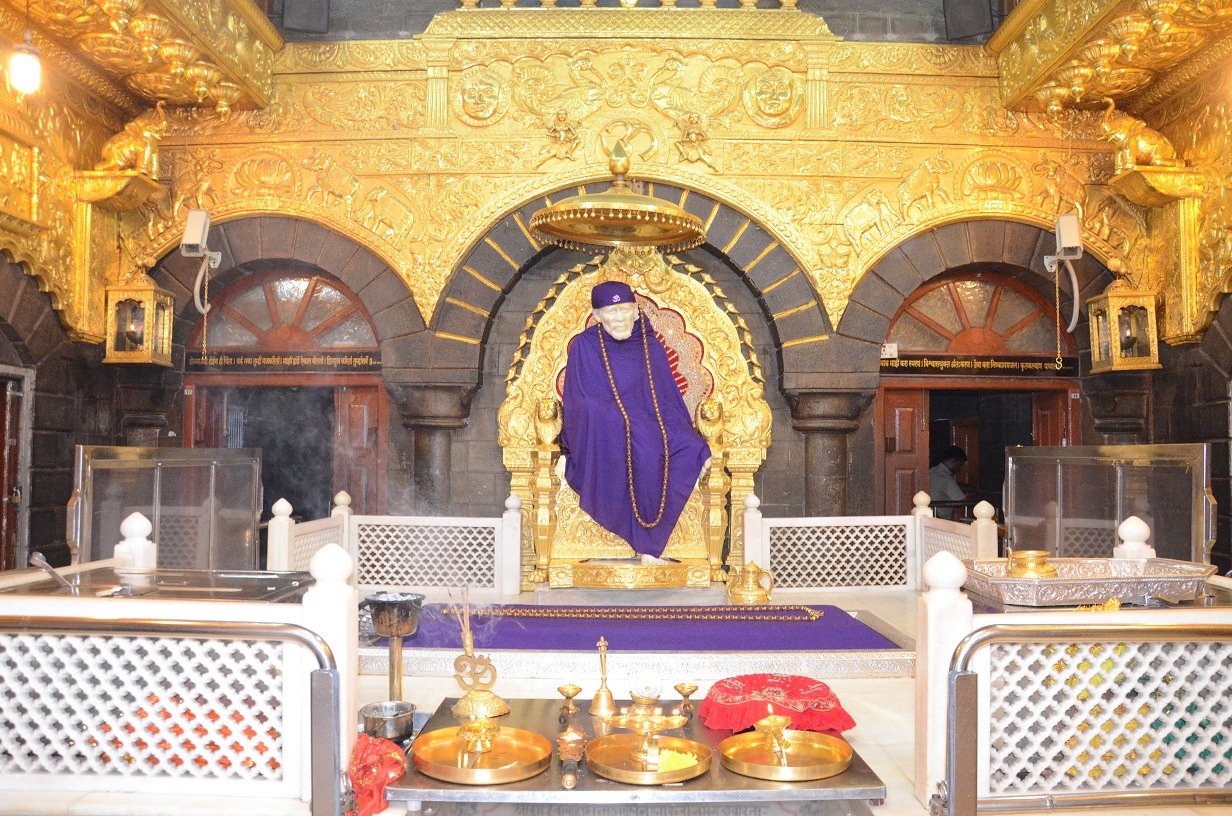The Kolhapur Mahalakshmi Temple in Maharashtra is one of the Shakti Peethas also called Dakshin Kashi, listed in various puranas of Hinduism. The Kolhapur peetha is of special religious implication, being one of the six places where it is believed one can either obtain salvation from desires or have them fulfilled.
The temple takes its name from Mahalakshmi, the consort of Vishnu, and it is believed that the divine couple resides in the region. The temple belongs, architecturally, to the Kannada Chalukya Empire, and may have been first built circa 700 AD. Mounted on a stone platform, the image of the four armed and crowned goddess is made of gemstone and weighs about 40 kilograms. The image of Mahalakshmi carved in black stone is 3 feet in height. The Shri yantra is carved on one of the walls in the temple. A stone lion, the vahana of the goddess, stands behind the statue.
Kolhapur Mahalakshmi Temple

Pandharpur

SHANI SHINGNAPUR

SAI MANDIR

Pandharpur is located in a place, from Sholapur on the banks of river Bhimarathi. This place is one of the most revered pilgrimage locations in Maharashtra.
Pandharpur conserves Lord Vithoba’s image in a grand temple. Vithoba is a type of Krishna. The name Vithoba means Father Vitthala. Vitthala is said to have been derived from the word Vishnu in Kannada.
The worship of Vishnu – Vitthala at Pandharpur is derivates mainly from the puranas and has been augmented by the contribution of the great Vaishnava saints of Maharashtra from the 13th to 17th centuries.
The temple with its vast area has a total of six gates. The eastern entry to this temple is known as the Namdev gate. The sanctum enshrines a standing image of Vithoba also famous as Panduranga, Pandhari or Vitthala. A dip in the holy river Chandrabhaga on whose banks Pandharpur resides, is believed to have power to wash all sins.
This Shani Shingnapur village is an interesting village as none of the houses have doors. The belief of the villagers is that their Lord Shaneshwara will protect them from all evil.
The image of the lord is large and is made of black stone. Only male devotees are allowable to worship in the temple. The devotees should first take bath in the public bathrooms and then pray with wet dhotis without any upper garment.
The spectacle of the deity in black stone is overwhelming. A unique aspect of this place is, that no temple structure houses the Shanidev. There is only a simple platform on which stands the swayambhu idol, in black stone.
Unlike other pilgrimage centres, devotees here can perform puja or abhishek or other religious rituals themselves.
The temple accommodating the last remains of Sri Sai Baba is known as the Samadhi Mandir of Shirdi. It was Sreemant Gopalrao a rich man from Nagpur who got the construction of the temple started to place the idol of Lord Krishna. The Samadhi temple is the central point of Shirdi pilgrimage and people stand in long meandering queues to get a glimpse of Sai Baba’s last mortal remains.
